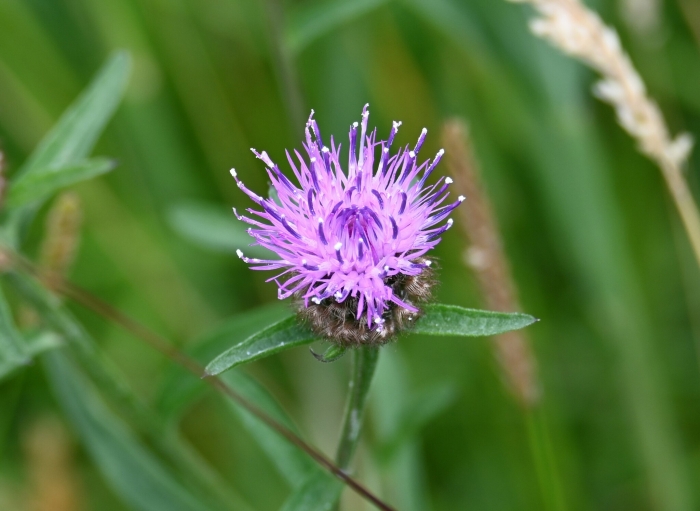Lesser Knapweed
(Centaurea nigra)
Lesser Knapweed (Centaurea nigra)
/
/

© Phil James
CC BY 4.0
Image By:
© Phil James
Recorded By:
Copyright:
CC BY 4.0
Copyright Notice:
Photo by: © Phil James | License Type: CC BY 4.0 | License URL: http://creativecommons.org/licenses/by/4.0/ | Uploader: wyvern1963 | Publisher: iNaturalist |
























Estimated Native Range
Summary
Centaurea nigra, commonly known as Lesser Knapweed, is a perennial herb native to grasslands, meadows, and open woodlands across Europe. It can grow up to 3 feet tall and is characterized by its thistle-like purple flowers that bloom from June to September. The flowers are highly attractive to pollinators, particularly bees and butterflies. Lesser Knapweed has deeply lobed leaves and distinctive black or brown bristly phyllaries that give the plant a rugged appearance.
This plant is valued for its nectar-rich flowers that support wildlife and can be used in wildflower meadows, borders, and naturalistic plantings. It is relatively low maintenance, tolerating a range of soil types, though it prefers well-drained conditions. Lesser Knapweed thrives in full sun but can also handle part shade. It is drought-tolerant once established, making it suitable for xeriscaping. However, it can be potentially invasive outside its native range, so it is crucial to check local regulations before planting.CC BY-SA 4.0
This plant is valued for its nectar-rich flowers that support wildlife and can be used in wildflower meadows, borders, and naturalistic plantings. It is relatively low maintenance, tolerating a range of soil types, though it prefers well-drained conditions. Lesser Knapweed thrives in full sun but can also handle part shade. It is drought-tolerant once established, making it suitable for xeriscaping. However, it can be potentially invasive outside its native range, so it is crucial to check local regulations before planting.CC BY-SA 4.0
Plant Description
- Plant Type: Herb
- Height: 1.5-3 feet
- Width: 1.5-3 feet
- Growth Rate: Moderate
- Flower Color: Purple
- Flowering Season: Spring, Summer, Fall
- Leaf Retention: Deciduous
Growth Requirements
- Sun: Full Sun
- Water: Medium
- Drainage: Fast, Medium, Slow
Common Uses
Bee Garden, Border Plant, Butterfly Garden, Low Maintenance, Street Planting
Natural Habitat
Grasslands, meadows, and open woodlands across Europe
Other Names
Common Names: Lesser Knapweed, Common Knapweed, Spanish-Buttons
Scientific Names: , Centaurea nigra, Centaurea austriaca, Centaurea austriaca f. austriaca, Centaurea austriaca subsp. austriaca, Centaurea dubia subsp. nigra, Centaurea nigra var. mairei, Centaurea nigra var. nigra, Centaurea pectinata var. fuscata, Centaurea phrygia
GBIF Accepted Name: